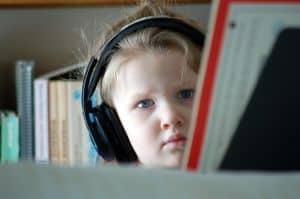

Great Activities to Help Kids Learn to Listen
Teaching a child how to listen can be difficult at times. Parents can never tell if their child is either distracted or choosing not to pay attention. Regardless, learning how to listen will be benefit children in the long run. People can learn by listening. In a conversation, sometimes actively listening is more productive than actively speaking.
But listening isn’t just narrowed down to children listening to their parents. Listening is also a way of identifying. The sense of sound is very important. Without hearing, life would be difficult. Teaching a child how to listen from a young age is very effective. The following activities will benefit a child in the long run.
Slow and Fast
This game activity is all about rhythm. Select a CD to play and have your child listen to various tempos of music. Every time a fast song is played, ask your child to dance as fast as he or she possibly can. Then, play a slower song and ask your child to lessen the pace. Play a few songs of varying rhythms and see if your child can pick up on the various speeds.
Going to Bed and Waking Up
This activity is a way to teach kids about rising and falling. Grab your child’s favorite blanket and have him or her pretend that it’s time to sleep. Tell them “goodnight” and let them pretend that they are sleeping. They can even incorporate snoring if they want! Then, after a few minutes or so, say, “good morning!” and see how quickly they get up Do this a few times until your child picks up on it.
Clapping the Rhythm
This is a great activity that tests the attention of children. Ask your child to stand facing you. With your hands, clap a certain rhythm and then stop. Ask your child to repeat what you just did. See if he or she can duplicate your rhythm. It is up to you to determine the length and difficulty of each rhythm.
Animal Imitations
Although this may make you feel silly, it will get kids familiar with the various sounds of animals. From making moo sounds to barking and meowing, your child will definitely find this activity fun and silly at the same time.
Reading a Short Story
Children love story time. Select a short, but simple story and read it to your child. After you have finished reading it, ask your child specific questions about the story. See how much the child paid attention. After your child has answered basic questions, ask him or her to try telling you a story as well.
The Number Game
Call out a series of random numbers. After you have called them out once, repeat a second time for clarification. After that is done, ask your child to try to repeat the numbers that you have just said. Start with just a few numbers, adding more as you go along to increase the difficulty.
Simon Says
This is a classic way to help kids learn to listen. Chances are, your child has already played this game at school. If they're unfamiliar with the game or if it has been a while since they last played, go through the rules with them again. If you need a refresher, here is how you play.
As "Simon", you'll instruct your child to do different things. What you have them do is up to you, but some ideas include jumping, sitting down, touching their nose, and turning around in a circle. The trick of the game is that your child is only supposed to do what "Simon says". So, if you say "Simon says" before the action, such as "Simon says turn around", your child should do that action.
If you don't say "Simon says", however, your child shouldn't do that action. If you just say "turn around", your child shouldn't move. This is a great way to teach your child how to pay attention to the specifics of what someone is saying. Active listening is a skill they'll need, both at school and in their personal life.
This game can easily be played with multiple children. Whenever a player does an action that Simon didn't say to do, they are out. Play continues until only one child remains. Children are often competitive, so this is a way to satisfy their competitiveness while also improving their listening skills.